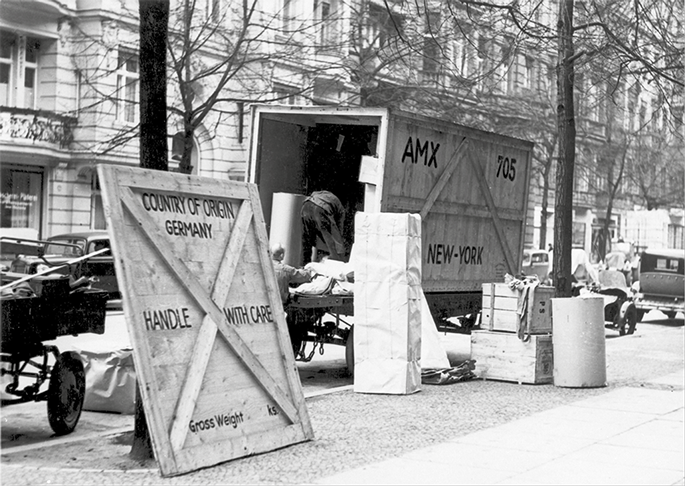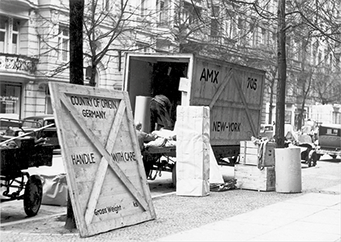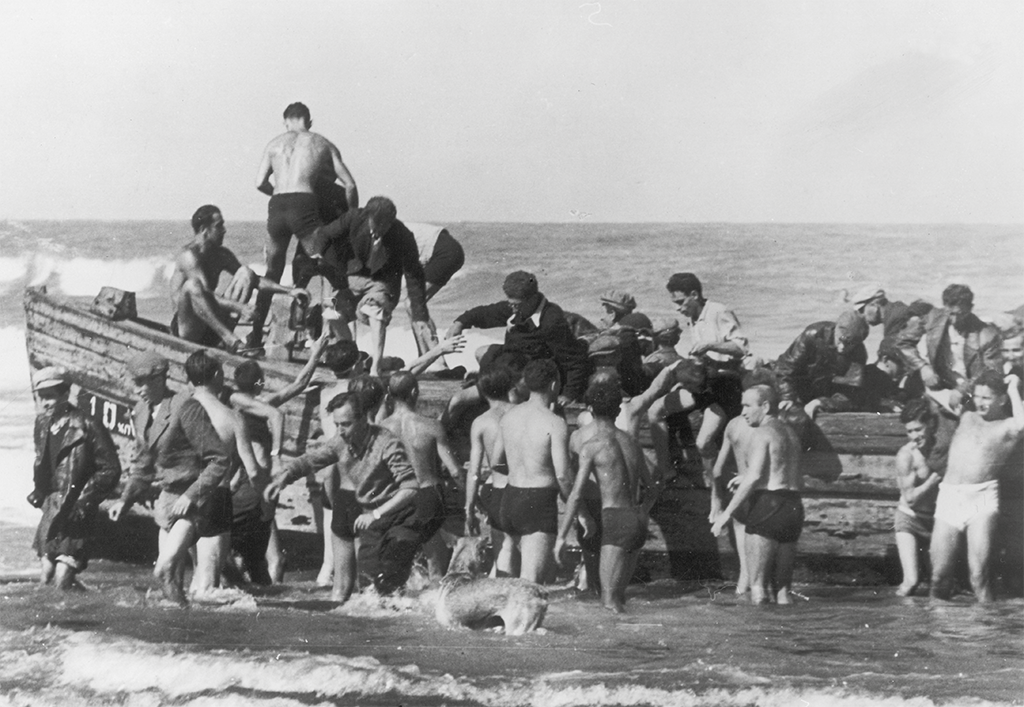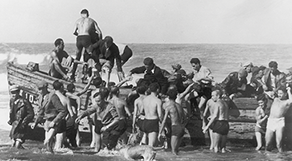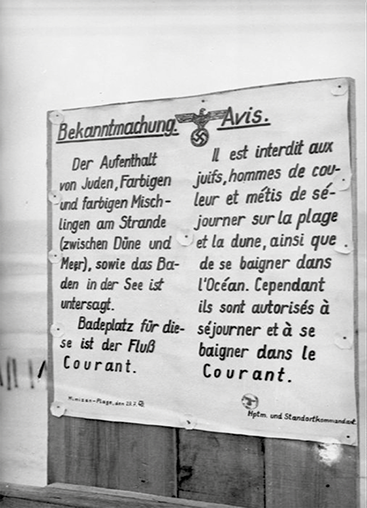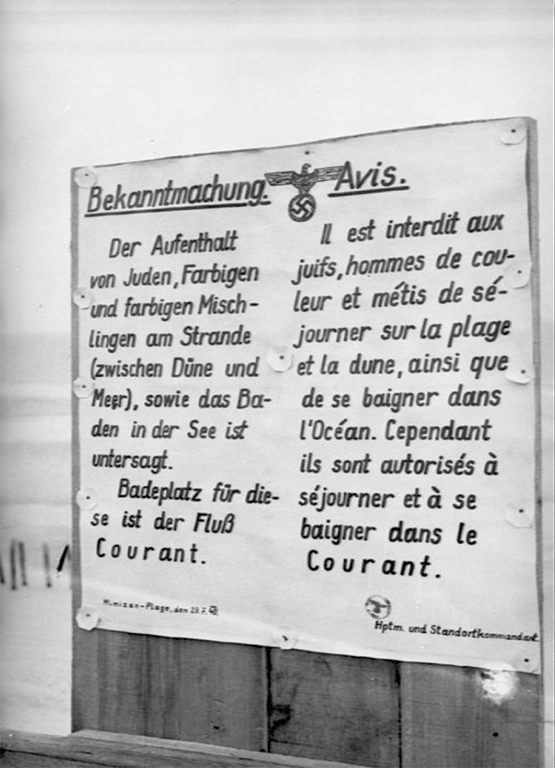
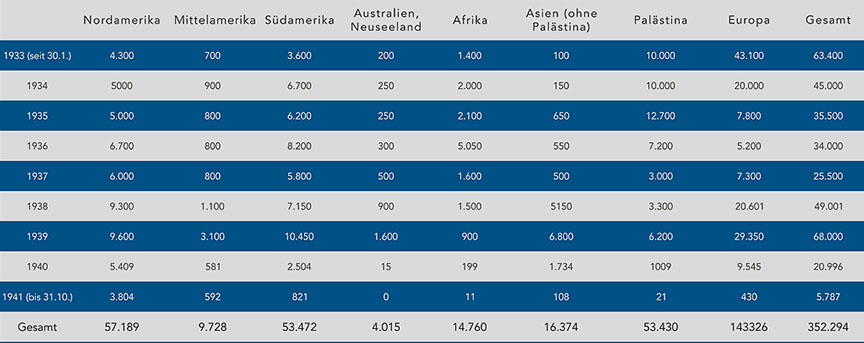
Emigration
Summer 1940; racist and anti-Semitic sign at a French beach
(Federal Archives, image 101I-057-1699-3)
It was often younger people who left their homeland and went into exile because of increasing hostility and professional harassment. This applied in particular for Palestine as a host country, which at the time was ruled under British mandate and initially interned refugees from Nazi Germany. Immigrants with a medical education however were very welcome, as a medical infrastructure had to be developed there from the ground up.
A comprehensive report from the “Statistics of the Reich Association of Jews in Germany” reveals the status of emigration from 1933 to 1941: Most emigrants went to the United State of America, followed by European states and Palestine. This was also the case for Jewish radiologists who emigrated: of a total of 77 people, 37 left Germany for the USA, nine for the United Kingdom, and nine for Palestine. One or two emigrants chose to emigrate to one of 19 other countries, including Switzerland, China, Brazil, or Venezuela.
Almost half of the physicians with radiological training who had been stigmatised as Jews were able to emigrate from Nazi Germany. Of the 165 victims of discrimination and persecution, 77 people, among them four women, left their former homeland and fled into exile. Many older physicians, who for a variety of reasons often could not imagine building a completely new existence in exile, fell victim to the deportations that began in mid-1941 into camps, ghettoes, concentration camps and extermination camps. Approximately 9.8 percent of Jewish radiologists and medical practitioners were killed.
Berlin, emigrating Jews, moving van, 1939
(Federal Archives, image 183-E03468)
The refugees who were only able to leave after the beginning of the Second World War faced a problem: after Germany occupied an ostensibly safe exile country – Austria, the Netherlands, Czechoslovakia, and parts of France – it became in the best case an “unfriendly” transit country occupied by the Germans from which they had to depart. Prof. Dr. Richard Werner, for example, did not have the good luck to escape. After the Protectorates of Bohemia and Moravia were established and the Germans had occupied Brünn, Werner was deported into the ghetto in Theresienstadt, where he died shortly before the end of the war.
Illegal immigrants in Palestine (boat people, shipwreck) (bpk/Walter Zadek)
Table: Appendix to “Report on the immigration of Jews from the Old Empire since 1933”, Federal Archive, R 8150/31, cited at www.statistik-des-holocaust.de (with friendly permission).
Menu
Deutsche Röntgengesellschaft e.V. © 2018
| Impressum | Datenschutz
